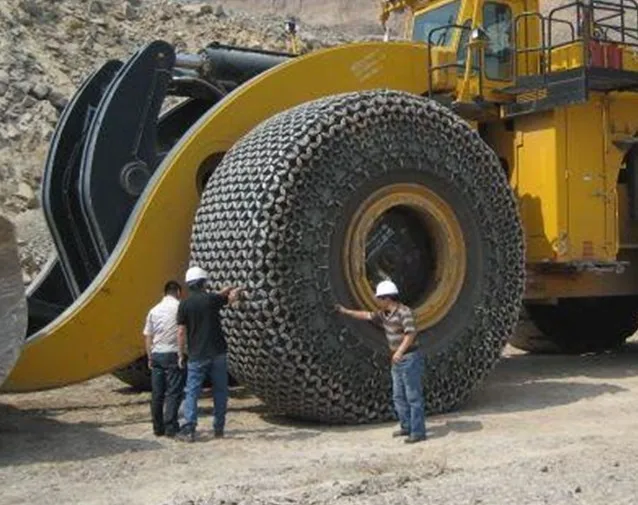If you travel to the mountains or snowy areas regularly, sooner or later you’re going to have to use tire chains. Start by getting the right set for your vehicle at your local Les Schwab.
Quick-fit chains are not your grandpa’s tire chains. They are MUCH simpler to put on and take off. Here are a video, step-by-step instructions, and driving safety tips for installing quick-fit tire chains on your vehicle.
When you need chains, driving conditions are nasty. Snow is coming down, passing traffic is spraying slush, dirty water is dripping off your wheel wells, the road is slick, and it may be dark. Don’t make this the first time you put on your chains.
Practice installing your new chains once BEFORE you travel. Take advantage of a dry garage or driveway to make sure your winter tire chains are the right size and you’re comfortable putting them on. If needed, the professionals at Les Schwab Tire Centers can help.
Put together a simple winter road trip safety kit with warm gloves, waterproof layers, and other items to make your winter driving more safe and comfortable. In the winter, always carry this emergency kit and tire chains in your vehicle.
Once you’re comfortable installing your chains, you’re ready to hit the snow.
Be Safe. If you’re on the road, pull off as far as possible onto a safe shoulder. Flip on your hazard lights. Put on your waterproof layers, hat, headlamp, and gloves from your winter road trip kit.
Identify the Correct Tires. If your vehicle is front-wheel drive, the chains go on the front. If it’s rear-wheel drive, chains go on the back. If it’s all-wheel drive, please check your owner’s manual. If you’re not sure, you can ask the experts at Les Schwab for help.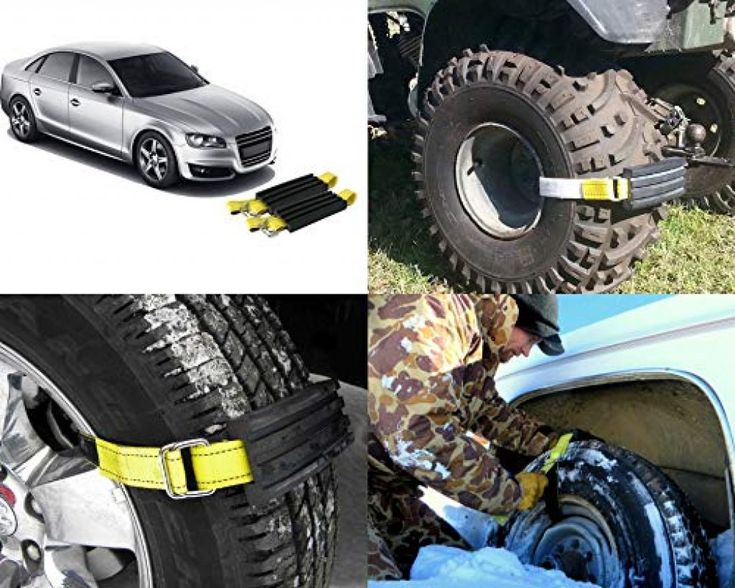
Pull Out Chains & Instructions. With your vehicle parked, open the bag and pull out your instructions and your first chain. Each bag comes with two chains. The plastic instruction mat that comes with your chains can be used as a barrier between you and the snow to keep you dry.
Untangle Your Chains. Holding them from the plastic-covered cable, make sure everything is straight and the chains are not looped over one another. Hold up your chains so the yellow end is in your left hand and the blue end is in your right.
The chains should hang loosely and the metal hooks seen along the yellow and blue sections should be facing away from you so they don’t damage your tires.
Place Chains onto Your Tire and Connect the Cable. Lay your chains on the ground and push them behind the tire, yellow cable end first, from the right side to the left.
Once the chains are centered behind the wheel, grab both ends and pull them up over the top of the tire. You should feel the chains against your axle.
This will allow you to easily connect the yellow and blue ends of the cable by slipping one end into the other and pulling them into place.
Connect the Red Hook. Now that the cable is connected on top, look for the red hook directly opposite the cable connection. Connect the red hook on the right to the first available gold link on the left.
Check the Diamond Shape. Push the connected chain over the top of the tire. You should see the diamond shape in the chains against your tire. Between each of those diamonds is the center rail, which should be placed down the middle of the tire tread.
Connect the Red Chain Along the Bottom. Now that the cable is connected on top, look for the red hook directly opposite the cable connection. Connect the red hook on the right to the first available gold link on the left. Push the connected chain over the top of the tire.
Now that the cable is connected on top, look for the red hook directly opposite the cable connection. Connect the red hook on the right to the first available gold link on the left. Push the connected chain over the top of the tire.
The bottom of the chains includes a red draw chain with bungee on your right, and a chain guide on the left. Pull these out towards yourself.
Take the long red chain and run it through the chain guide and pull as tight as you can with both hands. Don’t pull using the bungee. As you pull, one of the chain links will find its way into the notch on the red chain guide, locking it into place.
Using the bungee end of the red chain, pull it through one or both of the red loops and secure it to a gold-side chain opposite the red loops. If you can’t get it through both loops, that’s ok, pull tight through one and attach it to a side chain to the left of the loop.
Repeat on Second Tire. Repeat these steps to install chains on the other side of your vehicle.
Repeat these steps to install chains on the other side of your vehicle.
Drive Forward Slightly. The next step is to drive forward about 15 feet, or a full car length. This gives the chains a chance to relax and settle on your tires.
Re-tighten Chains. To take up any slack, unhook the rubber end of the red draw chain and pull it tight again. Once it’s tight, guide the red chain through the loops and, again, securely latch the bungee end to the gold-side chain.
The chains should be tight on the tire. And, be sure to stop if you hear them making any contact with your vehicle. If your chains are still loose, unhook the bungee and adjust the red hook straight across from the chain guide. Unhook and reattach to the tightest position on one of the three gold chain links. It’s okay if the extra links are hanging loosely. Now, you’re ready to reattach your bungee.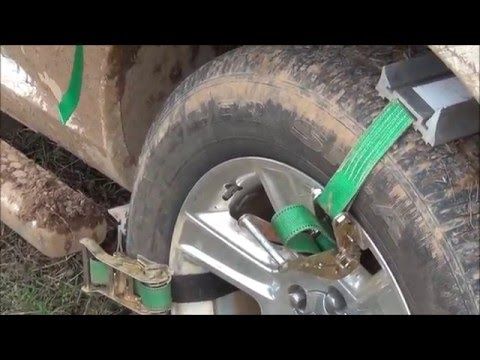
While driving with tire chains, listen for a loud sound of slapping, or metal on metal. If you hear any indication that a chain may be broken or hitting your car, STOP as soon as safely possible. Loose or broken chains that flap can wrap around a strut or shock component, causing big damage to your vehicle. To help prevent damage, here are a few tips for driving when you have winter chains installed on your vehicle.
Pull over in a safe location and remove the chains. Start by unhooking the bungee and chain from the guide, removing them from the tensioner. Unlatch the red hook, and then undo the blue and yellow cable connection. Once all of your chains are off and lying flat on the ground, pull backward or forward slowly a few feet so you can safely pick them up.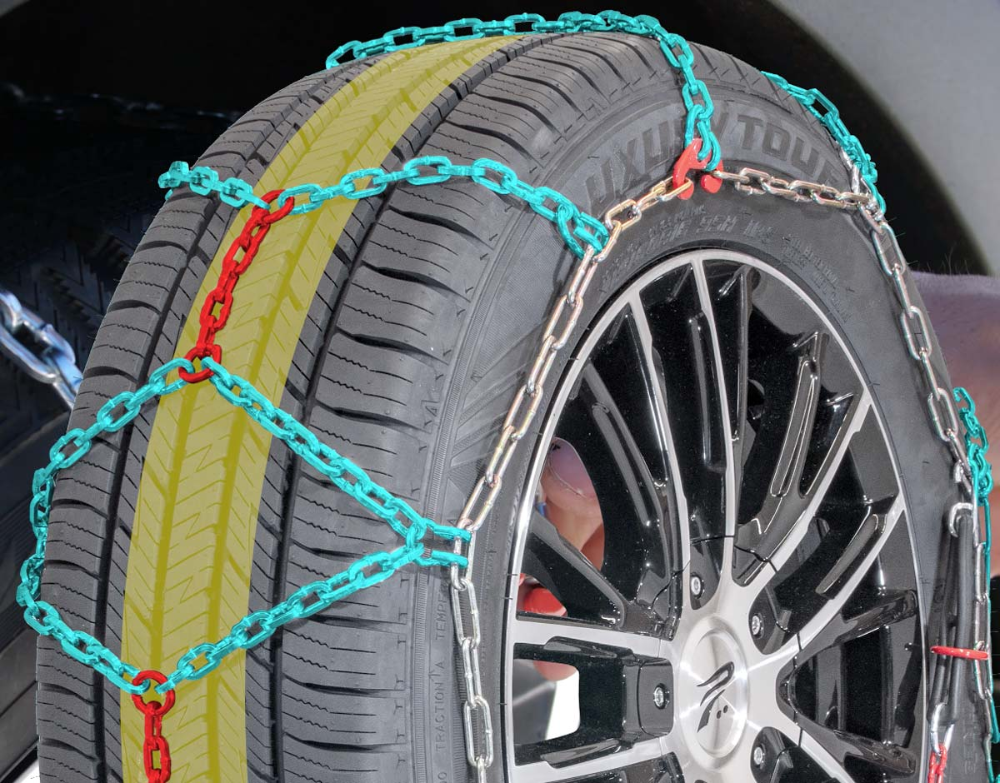
At the end of your trip, lay your chains out in the garage and let them dry. If you pack them wet, they can rust.
Also check them for wear, especially if you’ve driven them on asphalt for any distance. Look for flat spots, and replace the chains if you find some.
Link at left shows flattening from wear. Link in center shows sharp edge from wear that can damage a tire.
Remember, if you don’t use your chains all winter long, you can return them with proof of purchase to any Les Schwab for a full refund in the spring.
Get your next set of Quick-Fit chains, along with a few tips on how to install them, at your local Les Schwab, where doing the right thing matters.
Want more tips on winter road safety? See 19 Winter Driving Resources You Can’t Do Without.
Get More Winter Tips
Snow chains are some of the most essential winter accessories for truckers to carry on their big rigs throughout the chilly months.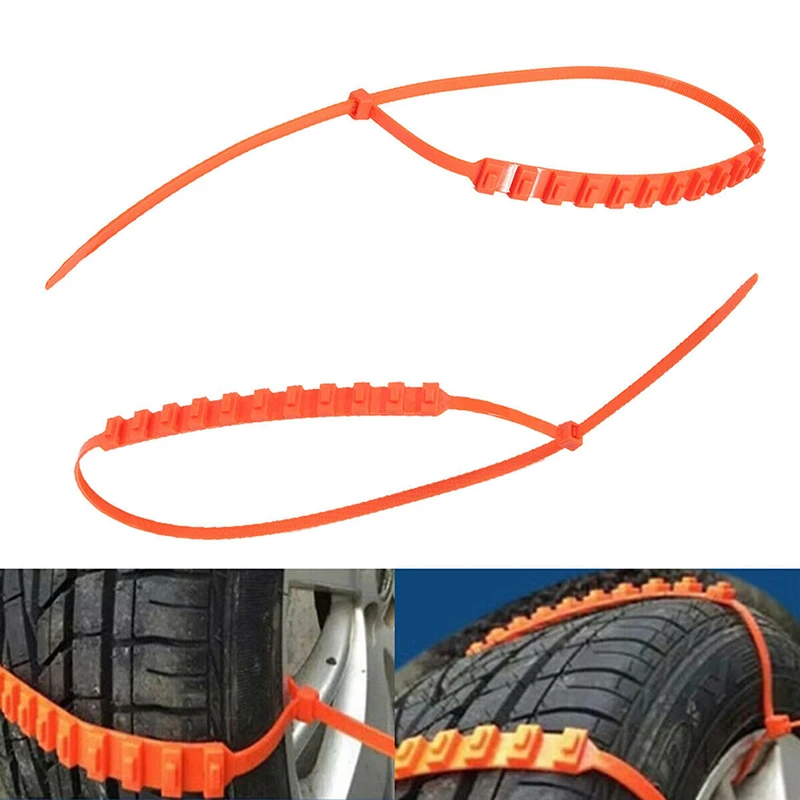 In fact, most states require drivers to carry them and will slap fines on truckers who do not obey chain laws. Installing snow chains on semi-trucks and other commercial vehicles is simple – so easy that it can be done in less than 10 minutes on the side of the road, if necessary.
In fact, most states require drivers to carry them and will slap fines on truckers who do not obey chain laws. Installing snow chains on semi-trucks and other commercial vehicles is simple – so easy that it can be done in less than 10 minutes on the side of the road, if necessary.
Trailers with brakes with put snow chains on the braking axle whereas and front-wheel drive vehicles will place them on the front (drive) axle. If you are wondering how to install snow chains you’ve come to the right place. Here is what you need to do for snow chain installation.
After finding a safe parking area, and taking the snow chains out of the box, you will want to lay them out for inspection. Sight any broken cross chains or twists in the links. The cams should not be bent or twisted, as well.
This is probably the most critical step in the process.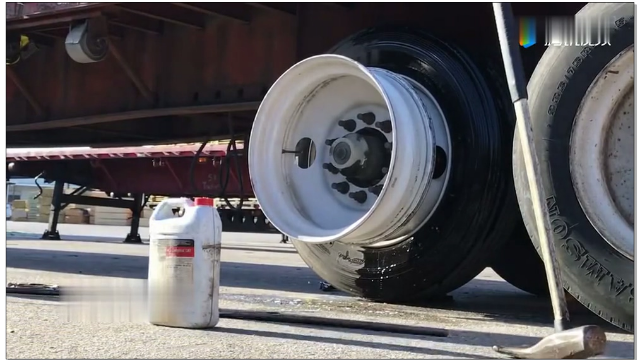 Drape the chains over the tires keeping a center alignment as best you can. You may find it is easy for installation if you grab the chains from the middle section. You may have more chain on the front or back – keep note of that. Ideally, there should only be one or two inches on one side or the other. Once the chains are hanging down evenly, you are ready to proceed – literally.
Drape the chains over the tires keeping a center alignment as best you can. You may find it is easy for installation if you grab the chains from the middle section. You may have more chain on the front or back – keep note of that. Ideally, there should only be one or two inches on one side or the other. Once the chains are hanging down evenly, you are ready to proceed – literally.
Guide the truck one to two feet – just enough so you can prepare to attach the chains. The tires should be able to grab onto the chains. Remember from Step 2 when we said some chain may be in the front or back? Here’s where it matters. You may wish to have a handy cam tightening tool (T-cam) or other fifth wheel hook tool to link the inside chains and you may need to move mudflaps out of the way to reach the inside hook. Fasten the hook to the looser chain – tightening as much as possible. As you pull, the chain should find its way and lock in place. Any excess slack can be tucked back through the hook.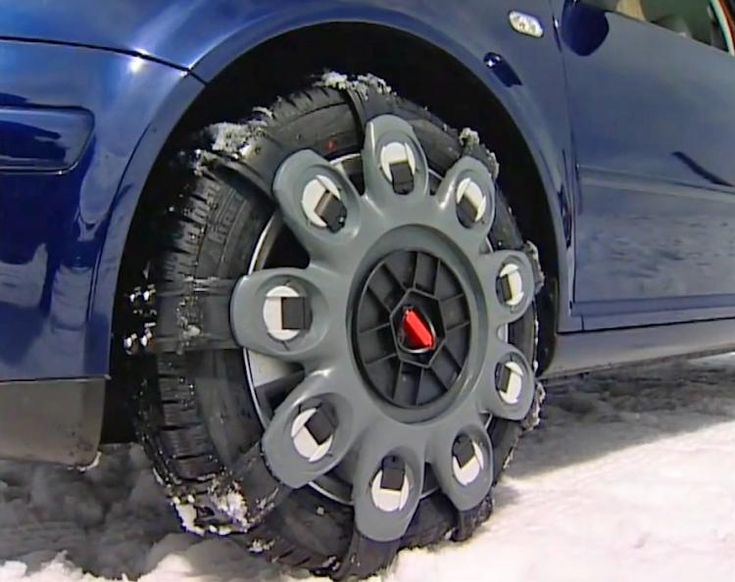 Some folks keep zip ties on-hand and tie them to links for enhanced security.
Some folks keep zip ties on-hand and tie them to links for enhanced security.
You will repeat the tightening process on the outside of the chain, as well. Some truckers even use bungees to add safety and attach the strap hooks onto the chain. If you decide to use bungee cords, space them evenly and attach them facing outward, not inward.
Reduce speed for the first-quarter mile and pull over after roughly 15 miles to confirm the chains are secure. Listen for sounds such as metal against metal and fix accordingly. If you proceed without fixing loose snow chains, you risk damage to the wheel-end components and tire chains. Remember, tire chains should only be used on snow and ice and not on bare pavements nor plowed roads.
Peerless has some of the best snow chains on the market that are easy to install. Shop now!
Category: Interesting news.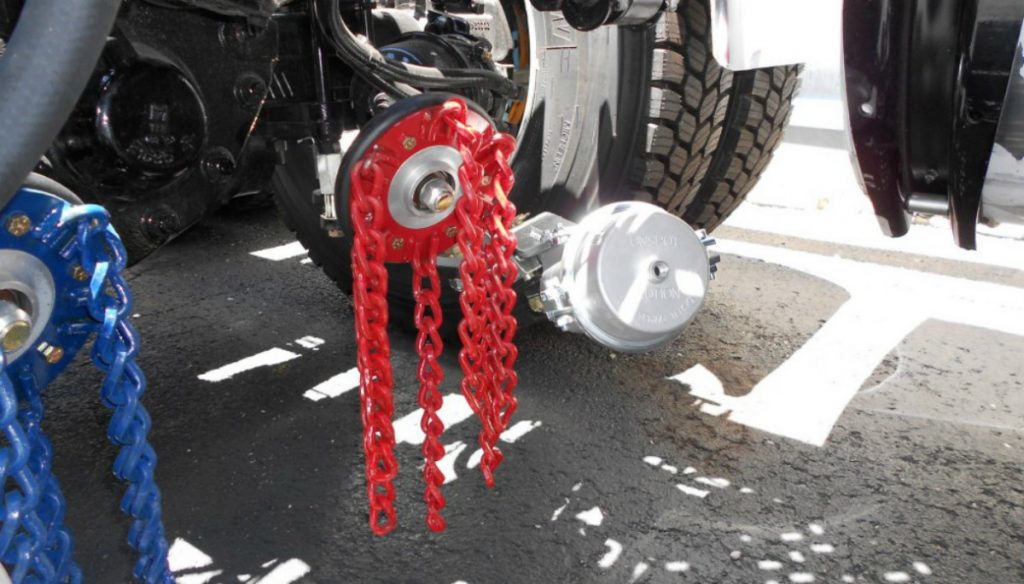
The truck tire industry is developing rapidly. Designers improve the rubber compound, improve the tread pattern - and still, in winter it is impossible to do without such an old-fashioned accessory as snow chains . Consider why the driver needs chains and how to install them correctly.
Snow chains are used off-road, in ice and to improve the grip of wheels with the road.
Due to the fact that the pattern of the chain protrudes outward and the contact area of the chains with the road is smaller than that of the wheel, there are gaps between the chain and the tire, the vehicle's flotation is improved, and wheel slip is prevented.
The main purpose for which truck drivers put chains on their wheels - is to ensure a confident ride on slippery roads and in snowdrifts, to increase the stability and controllability of the car due to better grip.

Experienced drivers always carry chains on their wheels. They rescue not only on the ice, but also help out at the cargo terminal if the snow is falling faster than it is removed by public utilities.
The variety of types allows you to find an option for any task - for certain types of trucks, for example, MAN and Scania, chains can be of different “caliber”, and their pattern is made in the form of “honeycombs”, “ladders”, etc. - depending on the type of road surface.
For heavy trucks and trucks, studded chains are mainly used to ensure tire grip in the most difficult areas.
In Europe and Scandinavia, road sections where chains must be used are marked with special signs. Not far from dangerous areas - sites for installing chains.
Not far from dangerous areas - sites for installing chains.
The requirements for installing chains in different countries are different: somewhere it is enough to “arm” only the drive axle, somewhere you need to put chains on all the wheels of the tractor and even on the wheels of the semi-trailer. Before you travel in winter, check the chain requirements for your itinerary.
Before leaving for flight , it is important to check the condition of chains and store them in special cases or strong plastic bags. Worn out chains break in transit and can shatter headlights and fender liner, damage the fuel tank and cargo, get stuck between the wheels and cause an accident.
The chains must fit the wheel size of your truck. The specifics of its installation, the type of fastening and the degree of tension depend on the type of chain.
Do not accelerate and brake sharply when driving with chains on wheels, exceed the recommended speed: 50 km/h for metal chains and 80 km/h for soft chains (rubber, plastic).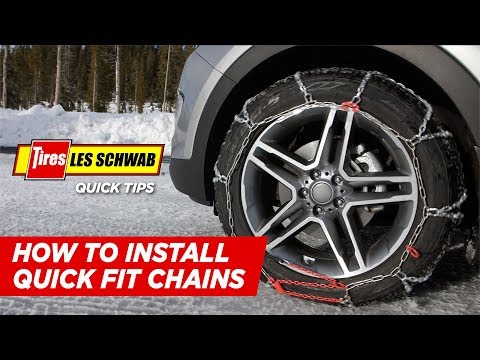 As the speed increases, centrifugal force can cause the chains to loosen, causing the chain to vibrate and contact the fender liner.
As the speed increases, centrifugal force can cause the chains to loosen, causing the chain to vibrate and contact the fender liner.
Immediately after the pavement has been replaced with clean asphalt, the chains must be removed - otherwise they will wear out quickly. After removal, the chain must be cleaned and dried.

Quality used spare parts for Scania trucks can be found in our catalog
LOOK FOR USED PARTS
Snowfall and ice make it very difficult for cars to move. To make it easier for drivers, it is recommended to use special snow chains, especially for trucks. They will help to increase the patency of equipment, and without significant labor and financial costs. It is enough just to buy chains of the appropriate size for the wheels of the car and firmly fix the steel links on the rubber.
To make it easier for drivers, it is recommended to use special snow chains, especially for trucks. They will help to increase the patency of equipment, and without significant labor and financial costs. It is enough just to buy chains of the appropriate size for the wheels of the car and firmly fix the steel links on the rubber.
The principle of operation of the chains is as simple as possible - the use of such devices increases the grip of the truck wheels with the road surface. Metal links literally bite into the ice shell or snow cover, this helps the wheels not to slip and it is easier to overcome obstacles.
Structurally, an anti-skid chain consists of two segments of connected metal links, which are located along the side surfaces of rubber tires, which are additionally connected to each other by transverse rows of links. The chain may have a different pattern depending on how the connecting elements are located. They can go both perpendicular to the direction of rotation of the wheel, and form rhombuses or a pattern resembling the shape of a honeycomb.
Snow chains for commercial vehicles are made of strong steel bars with reinforcement. Thanks to a special treatment, it is possible to significantly increase their strength, as well as provide them with good resistance to corrosion. To increase the coupling properties, sometimes not round, but conical rods are used.
Manufacturers now offer a wide range of different chains, which may differ in their design and materials.
Studded chains are available for the truck. Moreover, the spikes can also be of different shapes: round or square. They have very good performance parameters and work well in conditions where it is required to increase the grip of the wheels with the road. Suitable for use not only off-road, but also during ice.
Distinguish:

This variant works on a different principle. Such circuits are included in the work when you need to pick up speed or, conversely, slow down. The chain feed is carried out by pressing a button in the cab, and this happens already on the go. They can operate efficiently at speeds up to 50 km/h.
They have a special design - a special steel drum with an additional rubber coating, where the steel links are fixed. When the driver presses the button, the chain is fed to the wheel. Sections of the chain under the action of centrifugal forces are straightened and cover the surface of the wheel, increasing traction. If the chain is no longer needed, it can also be removed automatically at the touch of a button. The system is very interesting and convenient. But the installation of this option will be very expensive, so it is rarely used.
This is the simpler version. Such chains consist of separate transverse segments, which are fixed on the truck wheel with the help of special clamps that securely cover the wheel rim.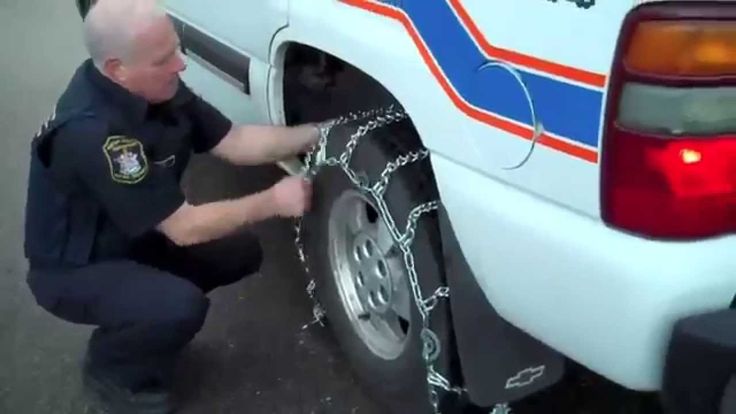
Their advantage is that if the wheel is already stuck in the mud, then even by putting on one such segment, you can help the car get out. Conventional snow chains will not allow this to be done, they must be put on in advance before going on an off-road trip.
It is also worth noting that the number of segments that the driver will put on the wheel can be different, most often it all depends on the specific road conditions. This can be adjusted independently.
Before choosing, you need to decide on many parameters: size, type, material, as well as the goal you want to achieve after installing the chains. All this is important, as it directly affects their effectiveness.
One of the important parameters is the nature of the heat treatment of the links of the snow chains. There are 3 main types:
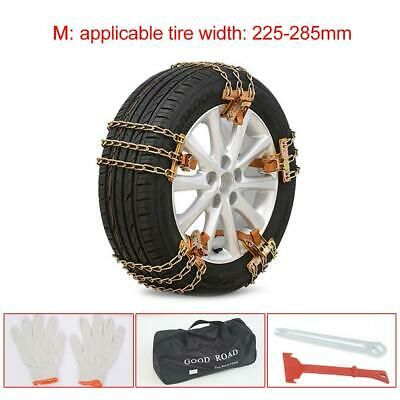 But since the metal is soft, it quickly wears out, that is, the service life of such chains is quite limited.
But since the metal is soft, it quickly wears out, that is, the service life of such chains is quite limited. In addition to the material, it is equally important to decide what the driver wants to achieve with the installation of chains.
Studded snow chains are leaders in flotation. They are great for trucks, they do a great job if you need to pass through mud, snow and icy roads.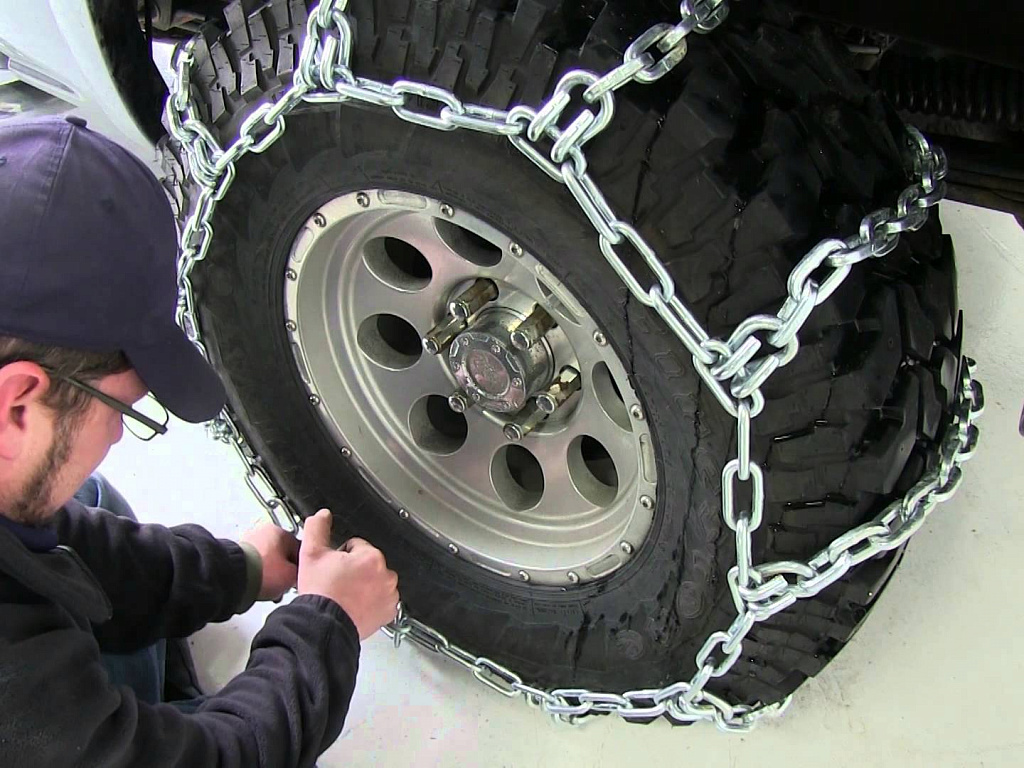 True, driving with such chains on a very hard road surface is not recommended.
True, driving with such chains on a very hard road surface is not recommended.
If it is not possible to buy studded snow chains, then you can increase the patency by another method. To improve grip and increase patency, it is enough to increase the number of transverse chain bars. This will help the car to better overcome difficult road sections.
This is important when transporting passengers and transporting fragile goods. Here it is best to take chains with "rhombus" or "honeycomb" patterns. They are most often used for buses.
A smooth ride is also important when driving in deep snow. If the chains allow you to drive smoothly, without jerking, then this minimizes the risk of wheel slip in loose snow.
Also note that the size of the links will affect the smooth running. The larger each individual segment, the better the wheel will cling to loose road surfaces. But when driving on a hard surface, for example, on ice, for a smooth ride, it is better to choose smaller links.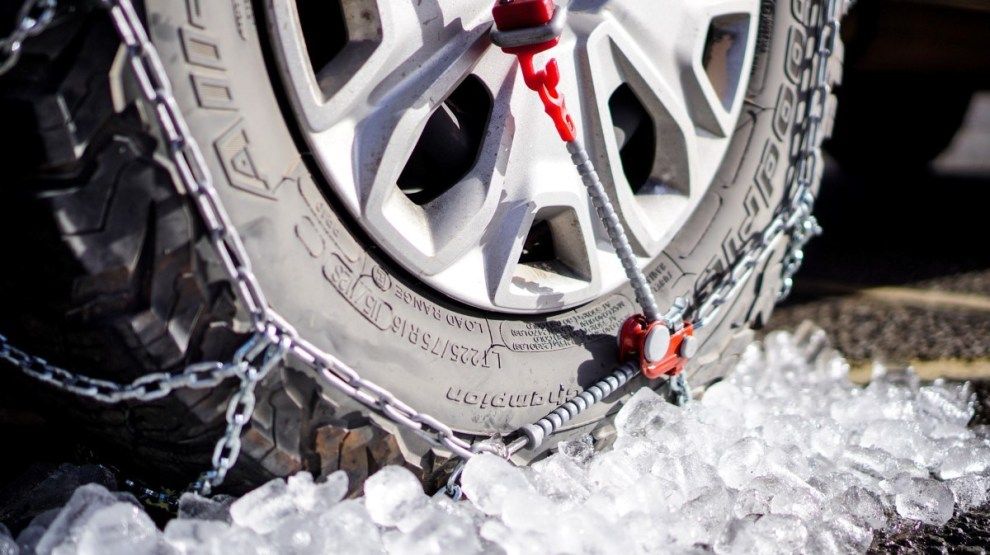
If the driver's priority is ease and speed of mounting and dismounting, segment chains are the best choice. Such "bracelets" are very quickly and easily mounted, and no special skills are required. Moreover, as mentioned earlier, they can be installed when the car is already bogged down to help it get out of the snowdrift. This is a fairly practical and easy-to-use option.
In the online store 130.com.ua you can buy snow chains for a truck in Kyiv, Kharkov or Odessa with delivery in Ukraine.
TOP 3 snow chains
Looking for the best quality and best chains for wheels? This rating of wheel chains is compiled on the basis of such parameters as: high demand with positive feedback from our customers, high-quality manufacturing - no factory defects and service calls, as well as official warranty and post-warranty support in Ukraine.
Features:
